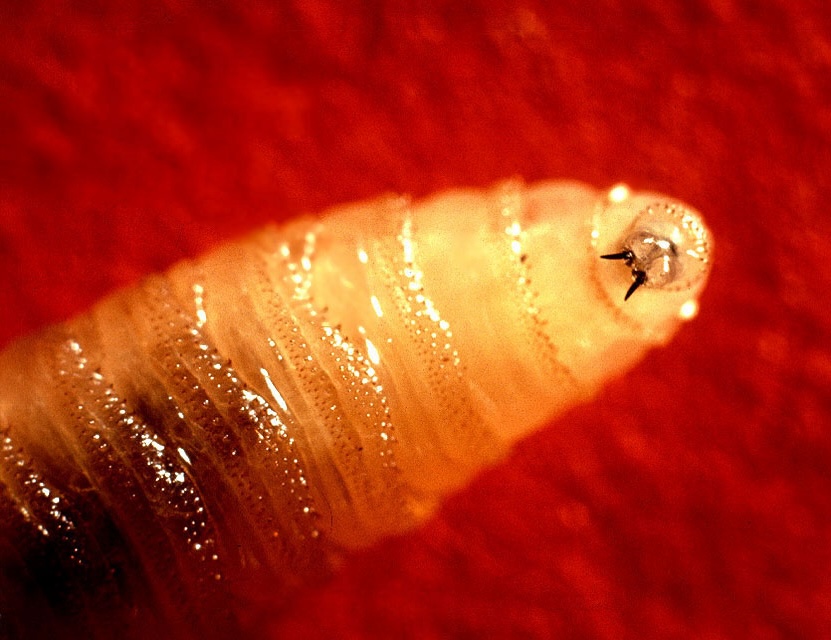If the parasitic worm that once devoured a portion of RFK Jr.'s brain were alive today, it might rejoice upon learning that yet another parasitic worm has wriggled into the spotlight and captured the heart of our nation, or whatever is left of it. The worm in question is the New World screwworm, a flesh-eating parasite that poses a horrific threat to the cattle industry and, despite international efforts at containment, made its presence known in Maryland, found suckling at the flesh of a person who recently traveled to El Salvador. Reuters broke the news from a tip by a savory-sounding industry group called Beef Alliance. The Centers for Disease Control and Prevention, which is required to report screwworm cases, was allegedly not forthcoming about the case to state officials, requiring state veterinarians to ask the CDC directly. This, of course, is an incredible way for all of us to confirm the first human case of screwworm in the U.S. Get in, loser: We're doing our own research on vaccines and potentially catastrophic parasites popping up in states near you!
Of the hundreds of thousands of species of worms that parasitize vertebrates, the New World screwworm is a particularly nasty piece of work. The worm's scientific name, Cochliomyia hominivorax, translates to "man-consuming," and it was first discovered infesting people incarcerated in a 19th-century penal colony in South America. As an adult, a New World screwworm fly looks like any other blowfly that infiltrates your house and seizes upon your trash. But while some blowflies subsist on necrotic tissue or feces, the screwworm can only feast on the flesh of the living. Once a female locates a living host—usually a mammal, but other vertebrates do in a pinch—she will seek out a wound or another opening, such as an eye or a nose. She will lay her eggs, which hatch horrifyingly soon, after just six to seven hours. By their third molt, the larvae possess two black hooks like walrus tusks, which enable them to burrow into flesh.
On the rare occasion that a screwworm larva infests a person, the condition is called myiasis, and it is generally treatable. The patient from Maryland has already recovered, and the CDC has stated "the risk to public health in the United States from this introduction is very low." But the real threat of the screwworm, biologically speaking, concerns our livestock, and by extension our food supply and economy. Screwworms killed millions of dollars' worth of cattle each year before the species was eradicated in the U.S. in the 1960s. That was when the United States Department of Agriculture came up with the ingenious idea of mass-rearing the wretched screwworms inside factories (stay with me), exposing them to radiation (I promise this worked) to sterilize them, and then releasing the flies to mate with wild screwworms (the saddest of all orgies). These unions produce no offspring, and decades of this sterilizing method, which cost billions of dollars, eventually beat back the screwworm from the United States, then Mexico, and finally Central America.
For decades, the Darién Gap, a hundred-mile ribbon of rainforest between Panama and Colombia, remained a de facto screwworm firewall, reinforced by millions of sterilized flies sprinkled via plane. In 2016, when the screwworm was sighted in the Florida Keys, the worms were once again extinguished with the help of 188 million sterilized flies. But in 2023, the screwworms surmounted the Darién Gap and have inched their way north, aided by an illegal cattle trade and the possibility that the sterile flies have become less effective. By May 2025, the worms had reached Oaxaca and Veracruz—just 700 miles from the U.S. border, and across a stretch of land far wider, and thus massively more difficult to contain, than the Darién. In just two years, our winning front against the screwworm crumbled, as Sarah Zhang explained in The Atlantic.
Now, there are not enough screwworm factories and not enough sterile flies to stop the spread. In May, Texas senators introduced the STOP Screwworms Act, which would authorize funds from the USDA to create a new screwworm factory. But the USDA, like many other federal agencies, has been hampered by the Trump administration's haphazard plan to slash federal funding; in the spring, DOGE cut 15 percent of the USDA's workforce, around 15,000 employees. And when the Trump administration killed 5,300 grants and programs from the U.S. Agency of International Development, it terminated a screwworm monitoring project.
If screwworms make it to the U.S.—which honestly seems more like a question of when—an outbreak could cost the nation more than $10.6 billion, according to an estimate by agricultural groups. The USDA has sent funds to a screwworm factory in Mexico, and has also committed $750 million to building a screwworm factory in Texas that can produce up to 300 million flies a week. But this factory will take years to build, and pushing the worm back south would require at least 500 million flies each week. Of course, fending off the worms is possible under the guidance of an administration invested in scientific research and skilled in soft power and economic aid across South America. So it's just our luck that such values are basically the opposite of those held by the trenchantly anti-science and transactional Trump administration.
The spread of screwworms, like many other wretched little beasties, will sprawl under climate change. Historically, colder, northern temperatures have prevented screwworms from settling anywhere winter temperatures drop below around 48 degrees Fahrenheit. But as temperatures rise, more land opens up for screwworms. Predicting new regions where the worm might establish itself requires an understanding of climate change and engagement with climate science that, again, is antithetical to an administration dead-set on denialism and peddling misinformation about the threat of global warming.
Even if the Trump administration manages to oversee a swift scaling up of screwworm factories and efforts within our borders, this will not be enough to stave off an infestation. Beef cannot be the only alliance here. The Trump administration demolished much of the nation's global soft power when it dismantled USAID and cut foreign aid to other countries, including those currently plagued by screwworms. Will the U.S. government be willing to offer the hefty international aid required to stop the worms in their tracks? Is this the first pro-worm administration in the history of our sorry nation? The way things look now, we are almost certainly screwed. Worms know better than us that borders are only as real as we make them.







